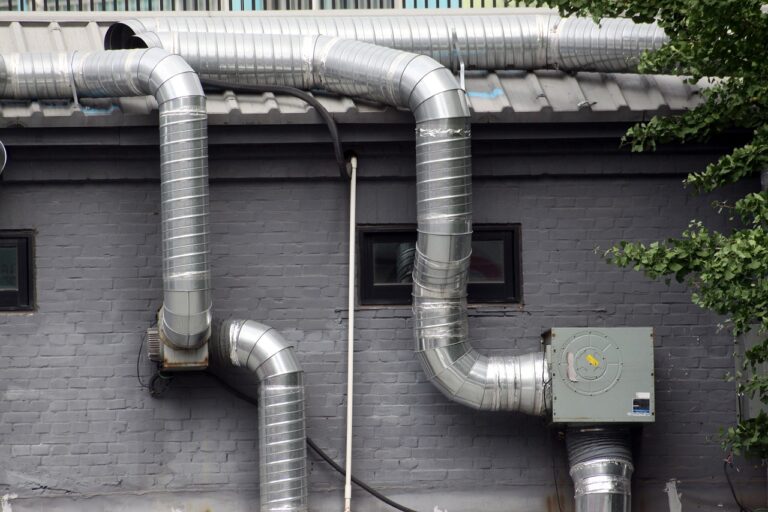The Trifecta of Clean Air: Purification, Filtration, and Duct Cleaning for a Healthy Home
Central Florida’s scorching temperatures make air conditioning a lifeline for homeowners, but the cost of keeping cool can sometimes be unexpectedly high. If you’ve noticed a spike in your energy bills, this blog post aims to uncover the factors contributing to your AC system’s increased power consumption and offers insights into how to address and mitigate these issues.
Understanding the factors contributing to your AC system’s increased power usage is the first step toward finding effective solutions. From upgrading to a more efficient system to addressing issues like insulation and duct leaks, taking proactive measures can result in significant energy savings and a more cost-effective cooling experience in Central Florida.
The Importance of Indoor Air Quality
Indoor air quality (IAQ) is a crucial factor that significantly impacts the health, comfort, and well-being of individuals within a home or any enclosed space. The importance of maintaining high indoor air quality cannot be overstated, as it directly influences both short-term and long-term health outcomes.
Poor indoor air quality can lead to a range of health issues, including respiratory problems, allergies, and aggravated asthma symptoms. The presence of pollutants such as dust, mold, pet dander, and volatile organic compounds (VOCs) can contribute to indoor air pollution, posing risks to occupants, especially those with pre-existing respiratory conditions.
In addition to physical health concerns, IAQ also affects mental well-being and cognitive function. Studies have shown that exposure to indoor pollutants can lead to fatigue, difficulty concentrating, and even mood disorders. Conversely, clean and well-ventilated indoor air promotes a healthier and more comfortable living environment.
A proactive approach to improving indoor air quality involves incorporating measures such as air purification, proper ventilation, effective filtration systems, and regular duct cleaning. These practices help mitigate the concentration of pollutants, allergens, and contaminants, creating an environment where occupants can breathe clean and fresh air.
Prioritizing indoor air quality is particularly relevant given the amount of time people spend indoors, especially in homes or offices. By recognizing and addressing the factors that impact IAQ, individuals can create a healthier indoor environment, contributing to overall wellness and ensuring a space where people can thrive and breathe easy.
Air Purification Systems
Air purification systems play a pivotal role in enhancing indoor air quality (IAQ) by removing pollutants, allergens, and contaminants from the air, creating a healthier and more comfortable living environment. These systems utilize advanced technologies to capture and neutralize various airborne particles that can negatively impact respiratory health and overall well-being.
Common indoor pollutants, such as dust, pollen, pet dander, mold spores, and volatile organic compounds (VOCs), can be effectively addressed by air purification systems. High-efficiency particulate air (HEPA) filters, activated carbon filters, UV-C light, and ionization are among the technologies employed to target and eliminate different types of pollutants.
HEPA filters are renowned for their ability to trap microscopic particles, ensuring that the air circulated in the space is free from allergens and contaminants. Activated carbon filters adsorb and neutralize odors, VOCs, and gases, contributing to a fresher and cleaner indoor environment.
UV-C light technology is effective in sterilizing and neutralizing bacteria, viruses, and mold spores. This adds an extra layer of protection against harmful microorganisms, particularly important in environments where airborne pathogens may pose a health risk.
Ionization technology releases charged ions that attach to particles in the air, causing them to clump together and fall to the ground. This process helps in the removal of fine particulate matter and enhances overall air quality.
Investing in a reliable air purification system is a proactive measure to address IAQ concerns, providing occupants with clean, fresh, and purified air. Incorporating these systems into homes, offices, and other indoor spaces contributes to a healthier living environment, reducing the risk of respiratory issues and promoting overall well-being.

Types of Air Filters
Choosing the right type of air filter is crucial for maintaining optimal indoor air quality (IAQ) and ensuring a healthy living environment. Different types of air filters serve varying purposes, targeting specific airborne particles and pollutants. Here are some common types of air filters used to enhance IAQ:
Fiberglass Filters:
- These are cost-effective and disposable filters designed to capture large particles. While they are efficient in preventing debris from entering the HVAC system, they may not be as effective in trapping smaller particles.
Pleated Filters:
- Pleated filters have a larger surface area than fiberglass filters, allowing them to capture smaller particles like dust and pollen. They offer better filtration efficiency and may need replacement less frequently.
HEPA Filters (High-Efficiency Particulate Air):
- HEPA filters are highly efficient in trapping particles as small as 0.3 microns. They are ideal for those with allergies or respiratory conditions, providing superior filtration capabilities.
Activated Carbon Filters:
- These filters excel at removing odors, gases, and volatile organic compounds (VOCs) from the air. Activated carbon has adsorption properties that neutralize and trap these pollutants.
UV-C Filters:
- UV-C filters use ultraviolet light to sterilize and neutralize bacteria, viruses, and mold spores. They are effective in preventing the growth of microorganisms within the HVAC system.
Electrostatic Filters:
- Electrostatic filters use an electric charge to attract and capture particles. They are washable and reusable, making them a sustainable option.
Understanding the specific needs of your indoor environment is essential in selecting the appropriate air filter. Regular maintenance, such as replacing filters as recommended, ensures their effectiveness in promoting clean and purified indoor air.
Duct Cleaning for Improved Airflow
Air duct cleaning is a crucial maintenance practice that contributes to improved air flow and enhanced indoor air quality (IAQ) in residential and commercial spaces. Over time, air ducts accumulate dust, debris, allergens, and contaminants, leading to restricted airflow and potential health hazards. Here’s how air duct cleaning positively impacts both air flow and IAQ:
Removal of Accumulated Debris:
Air ducts can accumulate dust, dirt, and other particulate matter over time. This buildup obstructs the passage of air, reducing the efficiency of the HVAC system. Professional air duct cleaning involves thorough removal of these contaminants, promoting unobstructed air flow.
Prevention of Mold Growth:
Moisture within air ducts can create an environment conducive to mold growth. Mold spores can be circulated through the air, negatively impacting IAQ. Regular air duct cleaning helps prevent mold growth, ensuring cleaner and healthier indoor air.
Enhanced Energy Efficiency:
Clean air ducts facilitate better air flow, reducing the strain on the HVAC system. Improved airflow contributes to enhanced energy efficiency, as the system can operate more smoothly and effectively.
Reduced Allergens and Irritants:
Dust, allergens, and contaminants present in dirty air ducts can exacerbate respiratory issues and allergies. Cleaning the air ducts eliminates these irritants, creating a healthier indoor environment with improved IAQ.
Extended HVAC System Lifespan:
Unobstructed air flow resulting from clean ducts reduces the workload on the HVAC system. This, in turn, contributes to an extended lifespan for the system, minimizing the risk of breakdowns and costly repairs.
Regular professional air duct cleaning is an investment in maintaining optimal air flow, energy efficiency, and IAQ. It ensures that the air circulated throughout the indoor space is clean, fresh, and conducive to a healthy living or working environment.
Reducing Allergens and Irritants
Reducing allergens and irritants is paramount for maintaining optimal indoor air quality (IAQ) and fostering a healthy living environment. Airborne particles such as dust, pollen, pet dander, mold spores, and volatile organic compounds (VOCs) can contribute to respiratory issues and allergies. Implementing strategies to minimize these allergens and irritants is crucial for improving IAQ and overall well-being.
Effective ventilation plays a key role in reducing indoor pollutants. Ensure that your home is well-ventilated by using exhaust fans, opening windows, and maintaining a consistent flow of fresh outdoor air.
Air purification systems equipped with HEPA filters help capture and remove airborne particles, including allergens and irritants. These systems contribute to a cleaner and healthier indoor environment.
Regular cleaning of floors, carpets, upholstery, and surfaces is essential to minimize the accumulation of dust and allergens. Use vacuum cleaners with HEPA filters and choose cleaning products that are low in VOCs.
Maintaining optimal humidity levels (between 30-50%) helps prevent the growth of mold and dust mites. Dehumidifiers can be effective in reducing excess moisture in damp areas.
Utilize allergen-resistant mattress and pillow covers to protect against dust mites. Wash bedding regularly in hot water to eliminate allergens.
Regular grooming and cleaning of pets can significantly reduce pet dander, a common allergen. Designate specific areas for pets and keep them away from bedrooms and upholstery.
Implement a strict no-smoking policy indoors to avoid exposure to harmful pollutants from tobacco smoke.
By incorporating these practices into your routine, you can create a healthier indoor environment with reduced allergens and irritants. Prioritizing these measures contributes to better respiratory health, decreased allergy symptoms, and an overall improved quality of life for occupants.
Preventing Microbial Growth
Preventing microbial growth is crucial for maintaining high indoor air quality (IAQ) and ensuring a healthy living or working environment. Microbial contaminants, including bacteria, viruses, and mold, can negatively impact respiratory health and contribute to various health issues. Implementing measures to control and prevent microbial growth is essential for improving IAQ and overall well-being.
Proper ventilation is key to preventing the buildup of microbial contaminants. Ensure proper air exchange by using ventilation systems, opening windows, and promoting the flow of fresh outdoor air.
Maintaining optimal humidity levels (between 30-50%) helps prevent the proliferation of mold and bacteria. Dehumidifiers can be utilized in damp areas to reduce excess moisture and inhibit microbial growth.
Addressing water leaks and moisture issues promptly is vital in preventing mold growth. Regularly inspect and repair leaks in plumbing, roofs, or windows to minimize the risk of microbial contamination.
Regular cleaning of surfaces, especially in areas prone to moisture, helps eliminate microbial contaminants. Disinfection with appropriate cleaning agents reduces the presence of bacteria and viruses on surfaces.
Installing air purification systems equipped with UV-C lights or other technologies helps neutralize and control microbial contaminants in the air. These systems contribute to a healthier indoor environment.
Ensure proper ventilation for appliances such as stoves, dryers, and bathrooms to prevent the buildup of moisture, which can create an environment conducive to microbial growth.
Regular professional cleaning of air ducts prevents the accumulation of dust, mold, and bacteria, ensuring that the HVAC system circulates clean air throughout the indoor space.
By incorporating these preventive measures, occupants can create an indoor environment with minimal microbial contamination. Prioritizing these strategies contributes to better IAQ, reduces the risk of respiratory issues, and promotes an overall healthier and safer living or working environment.
Controlling Odors
Controlling odors is a crucial aspect of maintaining a healthy indoor air quality (IAQ) and creating a pleasant living or working environment. Unpleasant odors can result from various sources, including cooking, pets, tobacco smoke, and household activities. Implementing effective strategies to manage and eliminate odors contributes to improved IAQ and overall occupant comfort.
Proper ventilation plays a key role in controlling indoor odors by ensuring a continuous flow of fresh outdoor air. Ventilation systems, exhaust fans, and open windows facilitate the removal of stale air and the introduction of clean air, minimizing lingering odors.
Air purification systems equipped with activated carbon filters are highly effective in neutralizing and absorbing odorous particles. Activated carbon has adsorption properties that capture and eliminate a wide range of odors, including cooking smells, pet odors, and smoke.
Regular cleaning and maintenance practices, such as cleaning carpets, upholstery, and other surfaces, help eliminate sources of odors. Using natural deodorizers like baking soda or incorporating houseplants can also contribute to a fresher indoor environment.
Proper waste management and disposal are essential to prevent the accumulation of odor-causing substances. Prompt removal of garbage and recycling, along with maintaining clean and sanitary conditions, minimizes the likelihood of unpleasant smells.
Addressing the root cause of specific odors, such as repairing leaks or addressing mold issues, prevents persistent and recurring smells. Identifying and eliminating the source of odors ensures a long-term solution for maintaining a fresh and odor-free indoor space.
By integrating these strategies, occupants can effectively control odors, creating an environment with improved IAQ and a more pleasant atmosphere. Prioritizing measures that address odors contributes to occupant well-being and enhances the overall quality of indoor environments.
Integrated HVAC Solutions
Integrated HVAC solutions are at the forefront of ensuring optimal indoor air quality (IAQ), offering a comprehensive approach to address various factors influencing air purity and occupant well-being. These sophisticated systems amalgamate multiple technologies and strategies to create a healthier and more comfortable indoor environment.
A cornerstone of integrated HVAC solutions is advanced air filtration. Incorporating technologies such as high-efficiency particulate air (HEPA) filters, activated carbon filters, and UV-C technology, these systems effectively capture and neutralize a broad spectrum of airborne particles. This filtration process significantly improves IAQ by removing contaminants that can negatively impact respiratory health.
Humidity control is another critical facet addressed by integrated HVAC systems. By maintaining optimal humidity levels, these systems inhibit the growth of mold and dust mites, contributing to a healthier indoor environment. Dehumidification features within these systems help manage moisture levels effectively.
Energy recovery ventilation (ERV) systems are seamlessly integrated to ensure a continuous supply of fresh outdoor air while efficiently recovering and conditioning the energy from exhaust air. This process enhances ventilation without compromising energy efficiency, promoting a constant flow of clean air.
Smart technology integration is a hallmark of these integrated solutions, allowing for precise control and monitoring. Smart thermostats, sensors, and automation contribute to energy-efficient operation and responsiveness to changing indoor conditions.
Regular maintenance and air duct cleaning are integral components of integrated HVAC strategies. Keeping the HVAC system clean and well-maintained prevents the buildup of contaminants, ensuring that the circulated air remains clean and healthy.
By incorporating these diverse elements into integrated HVAC solutions, a holistic approach to IAQ is achieved. Addressing filtration, humidity control, ventilation, smart technology, and maintenance, these systems create environments where occupants can breathe clean, fresh air, fostering a healthier and more comfortable indoor space.

